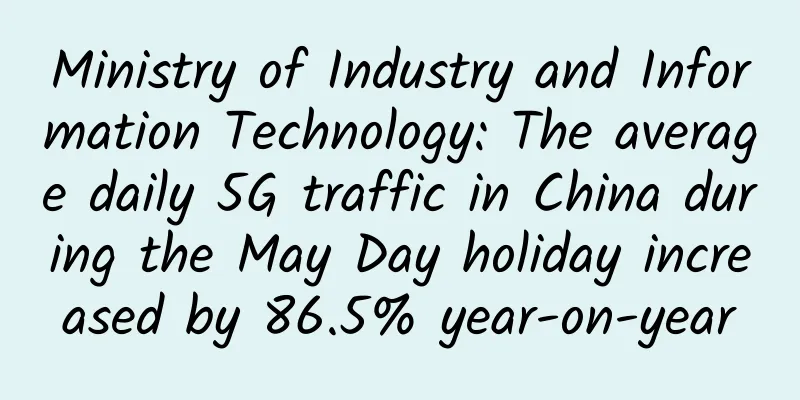How DevOps is shaping the future of networking

|
Since its advent in 2009, the DevOps philosophy has become a battleground that has urged technology teams to radically rethink how traditional developers (those who write code) and operations teams (those who manage the operating systems that code runs) work together. Before DevOps, they really didn't. Developers and operations were like the accounting and marketing departments in your organization. That's all changing.
As the name implies, DevOps is the merging of two departments into a simple, cohesive team where developers and operations staff are responsible for creating, developing, and managing code. The goal of this concept is to release code more stably, develop faster, and better integrate the infrastructure of the organization. It's a great idea, but in many ways, DevOps is more of a cultural movement than a technical one. And its most obvious impact is on enterprise infrastructure, especially in the networking area as it becomes more digital. "The question is how the DevOps philosophy is changing the networking area of the enterprise is interesting because in the beginning, the DevOps philosophy represented the polar opposite of networking," said Rajesh Sethu, head of DevOps at software analytics firm SoftBank. "DevOps is about implementing agile methodologies and 'fail fast,' while networking is about conservative change processes with a low tolerance for risk." He added, "Despite these challenges, the networking field is slowly implementing DevOps practices in a more controlled environment. For example, where traditional networking requests have taken a long time, now that those requests are becoming more automated, there are more emerging opportunities for networking professionals that require a blend of skills such as scripting, configuration and deployment." DevOps is all about working in a smarter, more agile, higher-quality way across the network. An opportunity for global collaboration One of the main trends driving DevOps is that the workforce is rapidly becoming more distributed, with many teams spread across the world. There was a time when everyone worked on a development project in the same room, with their shared code base and version management servers hidden in a corner of the room," said John McDonald, CEO of CloudOne. "Today's development efforts are global, with people working in dispersed locations looking to be part of that process securely and quickly. This is driven by decentralized skills: we now need to go wherever we can find the right person to do the job, whether that's an employee, contractor, or vendor component." MacDonald said this is weighing down enterprise network infrastructure as it is geared toward lightweight tasks like email rather than software development. Sacha Labourey, CEO of Cloudbees, agrees, "DevOps means you need to care more about your peers than your boss, and that it's ultimately your business's success that will make you win, not your team's partial success. The DevOps mindset brings attention to a talent that has long been underappreciated in IT: social intelligence." New thinking in the network field Under the impact of globalization, the understanding of the role of the network in enterprises is undergoing a dramatic change. "As traditional development departments and operations departments continue to increase their collaboration within and outside the enterprise, DevOps has an important role in the future network." Mark Davison, head of consulting firm Alsbridge, said, "Network, broadly defined, is not just "implementing the network" - this includes all front-end strategies and planning, as well as back-end monitoring, support, and maintenance of all types of topologies and transmission types, which requires close cooperation between development and operations departments so that both technical and service levels can be met." As networks grow in size, so does complexity, which means network performance becomes more difficult to guarantee. The automation tools inherent in many DevOps environments are therefore critical in determining network uptime, and accordingly, application uptime. If a DevOps team develops and implements an application using the latest technology, but the network that the application runs on does not meet its standards (or is not intelligently managed by the same process), the chances of application failure will increase. But new technologies can help monitor networks and predict failures, congestion, or network bottlenecks through automated network testing, diagnostics, and even self-healing systems, to a large extent even within the applications themselves. Integration of DevOps and Networking There are clear benefits to integrating the network into DevOps in a digital enterprise, but given the enormous complexity of most networks, it is a decision that requires careful consideration by CTOs and CIOs. The first question is what exactly the existing network infrastructure looks like. Is it a traditional server whirring away in a computer room? Is it built on a public or private cloud service? Or, most likely, is it a combination of these technologies? DevOps implementations on a traditional, old, messy physical network are naturally more complex than on a modern, pure cloud computing environment. Dr. Neal O'Horo, senior network engineer at systems integrator Redapt, said, "The key thing you should consider is if what you need is a forklift, a set of keys, or a migration plan for your enterprise IT architecture. Ask yourself: What is the need? Can you leverage your existing network, servers, storage as an underlay foundation and add an overlay on top of that? If you create or buy some network function virtualization or virtual network functions, where does it live and how does it communicate? How do you change your enterprise infrastructure to support DevOps? If you have a legacy network, there's a good chance you're not ready. Even newer systems may not be ready. Then you might ask: What does "ready" mean? Fortunately, there are many resources available to help you answer these questions and guide you on how to prepare your network for the DevOps world. You can start by joining online forums dedicated to DevOps, such as Spiceworks, or hiring a consultant to help you assess your network's DevOps readiness. |
<<: SDN Trend Review: 2016 is the First Year of Software-Defined WAN
>>: Star Domain CDN won the 2016 "Most Trustworthy CDN Solution Award"
Recommend
UBBF2020: Intelligent connectivity, creating new growth in industry value
[Beijing, China, October 13, 2020] Today, the 6th...
Flexible consumption model reduces IT expenses and helps investments
Not all workloads are suitable for the cloud, whi...
Asia Cloud: CN2 GIA cloud servers in the United States/Japan/Hong Kong starting from 24 yuan/month, with optional data centers in Shenzhen/Guangzhou/Fuzhou/Shiyan, etc.
AsiaYun is a domestic business founded in 2018. I...
China's 6G network will be commercially available in 2030 to help realize the "intelligent connection of all things"
On June 6, the IMT-2030 (6G) Promotion Group offi...
Countdown to frequency clearance and network withdrawal: 2G/3G existing users face new problems
According to various sources, the conditions for ...
my country's industrial Internet platform construction faces four major bottlenecks
The Guiding Opinions of the State Council on Deep...
Good news: Market forecasts 5G smartphone shipments to increase, but prices to continue to fall
Market research firm IDC expects the global smart...
How does 5G combine with the Internet of Things?
Until now, there are still a lot of voices in the...
HUAWEI CONNECT 2017 is coming soon. Let's see how the ICT industry will drive the world in 2025 - Huawei's industry vision
Preface Nowadays, the application of intelligent ...
Explore how Gateway API works in Service Mesh
A few days ago, Gateway API announced that it wou...
Unleashing the Potential of NFV
Network Function Virtualization (NFV) held great ...
After reading this article, you will regret not visiting the exhibition area of Huawei Eco Partner Conference 2019
[51CTO.com original article] After reading this a...
How Fiber Optic Networks Can Boost Small Business Operations
What is Fiber Optic? This is a form of internet t...
Top 5 Reasons for WiFi Device Setup and Connection Issues
Setup and connection issues are notoriously diffi...
Review of 5G industry virtual private networks in 2021: Blooming in multiple places and sailing with the momentum
If 5GToC helped operators achieve a return to bas...

![[Black Friday] SaltyfishTech: 499 yuan/year-4 cores/4GB/50G SSD/1TB@150Mbps/Germany 9929 line](/upload/images/67cabce9d3b53.webp)







